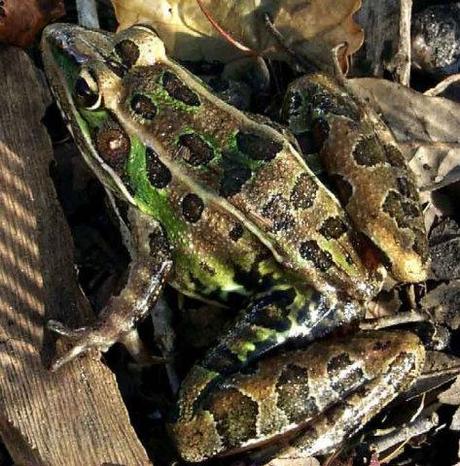
New Animal Species That'll Freak You Out
Published in Entertainment at April 18th, 2017 at 6:33 AM
It's hard to believe that we are still discovering new species of animals every day, its also hard to believe that several species become extinct every day, such is the vast size of the animal kingdom.
The Enigma Moth

The Enigma Moth here was announced in 2015 and it was described as a living dinosaur because of its ancient roots to that era. They complete their adult lives in a single day; emerging, mate, reproduce and die.
The Worm Eel

This is a worm eel, found in 2014 and is the largest of its kind reaching a whopping 50 inches long! That is around twice as long as other eels. That is crazy but in fact, the craziest thing about it is, it isn't even an eel...its a fish.
The Yellow Telmatobius frog

Here is the yellow Telmatobius frog, which is of a species of frog considered extremely endangered. This variant was classed as anew species in February 2015.
Ray Spider

Down the bottom of the web here is a new species of ray spider. The method of catching prey by a ray spider is very interesting, creating a cone like shape that they dangle at the bottom of. When prey moves above the web they release it and its fires like net, consuming the prey in sticky web.
The Chimaera Carophila (Ghost Shark)

Here's a newly discovered species of ghost shark, the Chimaera carophila, from New Zealand. The California Academy of Sciences introduced it to the world in December 2014.
The Hero Ant

This is the hero ant from Madagascar. When it sense an invading predator, it will grab the intruder and carry it a nearby drop (a cliff, in human terms) and leaps off it. Once it has removed the intruder from the colony, the ant will simply brush off the dust and get back to the colony.
Leopard Frog

This is a new species of leopard frog, found right by the statue of liberty in late 2014. Its distinct green side and deep and grunt like call was how it was discovered.
Macroseclides Micus (Namibian Elephant Shrew)

This is macroseclides micus, a tiny species of the Namibian elephant shrew. There are only around 12 new species of mamal discovered each year, most are insects or reptiles.
White-cheeked Macaque

In April 2015, one of the 12 mammal species was found again. It wasn't actually the white cheeks that gave it away as a new species, the highly trained eyes of the Dali university researchers noticed its strange looking penis and hairy scrotum.
Sichuan

This is the Sichuan bush warbler, it was discovered by its distinctive warbling whistle song and is extremely shy.
Leucothoe Eltoni Shrimp

This newly discovered Leucothoe eltoni shrimp is named after Sir Elton John. Dr Thomas who discovered it said he spent his career listening to the singer in his lab, so the distinctively large appendage was likened to Elton's enormous shoes and his name stuck.
Ruby Seadragon

This is a ruby seadragon in all its beauty, the oceans are still largely full of undiscovered species and this goes to show just that.
Stick Bug

That's no stick, but rather a very, very large new species of stick bug, discovered in late 2014 in Vietnam. It's more than a foot long, making it the second-biggest living insect ever found.
Bone House Wasp

Sure, this bone-house wasp, unveiled in July last year by scientists at the University of Freiburg in Germany, looks like any other stinger. But it's way meaner: it uses ant corpses to build its home, and lays its eggs inside living spiders. Pleasant dreams!
Glass Frog

This new species of glass frog, was recently found by researchers at the Costa Rican Amphibian Research Centre. Looks cute, right? Well, flip it over.

It's completely see-through under there. You can see its organs and blood vessels and everything.
The Phyllodesmium Undulatum

This nudibranch is a new slug species called the Phyllodesmium undulatum. Unveiled in 2014 by the California Academy of Sciences, it's essentially a poison-eating sea slug that glows.
Amphipods

This ghostly, shrimp-like creature was discovered by a team from the University of Seville in Spain in 2013. The new species, which are actually members of another crustacean group called amphipods, live in caves off the coast of Catalina Island, near Los Angeles.
Flapjack Octopus

The 7-inch-long flapjack octopus has been on researchers' radar since 1990, but many details about how it lives are still a mystery, and it has yet to be officially named. This little guy was photographed by aquarists at the Monterey Bay Aquarium Research Institute at about 1,080 feet below the ocean's surface.




